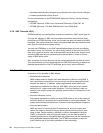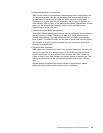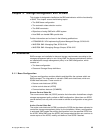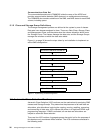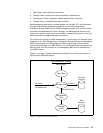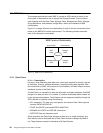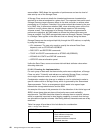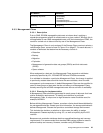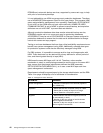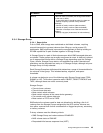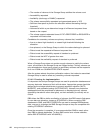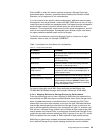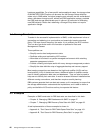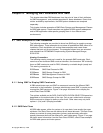
40 Storage Management with DB2 for OS/390
was available. SMS allows the separation of performance and service level of
data sets by use of the Storage Class.
A Storage Class construct details the intended performance characteristics
required for a data set assigned to a given class. The response times set for each
Storage Class are target response times for the disk controller to achieve when
processing an I/O request. It decides if the volume should be chosen by the user
or by SMS. Also, it determines whether SMS, when allocating space on the first
volume of a multi-volume data set, should allocate space on the remaining
volumes as well. The assignment of a Storage Class does not guarantee its
performance objective, but SMS selects a volume that offers performance as
close as possible. Only SMS managed data sets use Storage Classes. Changes
in a Storage Class applies to the data sets that are already using that class.
Storage Classes can be assigned implicitly through the ACS routines, or explicitly
by using the following:
• JCL statement. The user only needs to specify the relevant Data Class
keyword, such as STORCLAS=SCDBGS.
• DSS COPY and RESTORE commands.
• TSO/E ALLOCATE command such as STORCLAS(SCDBGS).
• IDCAMS ALLOCATE and DEFINE commands.
• ISPF/PDF data set allocation panel.
Unlike the Data Class, users cannot override individual attribute values when
allocating data sets.
5.3.2.2 Planning for Implementation
For each group of data sets that have similar performance objectives, a Storage
Class can exist. To identify and reference a particular Storage Class, a unique
one to eight character name is used, for example, SCDBFAST.
Consideration needs to be given as to whether a user is authorized to select a
specific volume within a Storage Group, which is governed by the Guaranteed
Space parameter. This is an arrangement which needs to be agreed upon
between the storage administrator and the DBA.
An example of the use of this parameter is in the allocation of the Active logs and
BSDS, where these data sets have critical performance and availability
requirements. The DBA should be allowed to allocate them on specific volumes,
which is especially important for dual logging capability, to ensure that the logs
are allocated on separate volumes. After being defined, these data sets are rarely
redefined.
Table 9 on page 40 provides a list of attributes for consideration.
Table 9. Storage Class Attributes
ATTRIBUTE COMMENT
Performance objectives - Direct bias
- Direct millisecond response
- Initial access response
- Sequential millisecond response
- Sustained data rate



